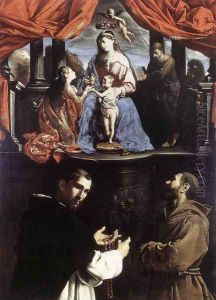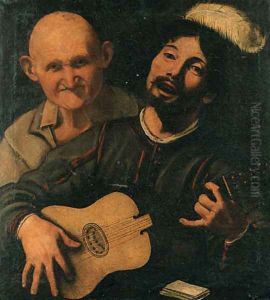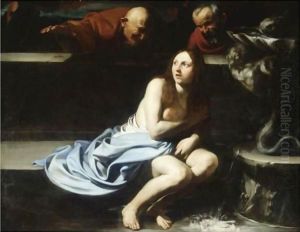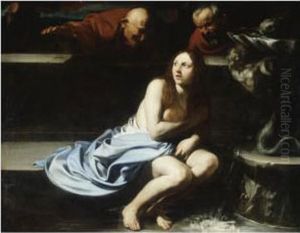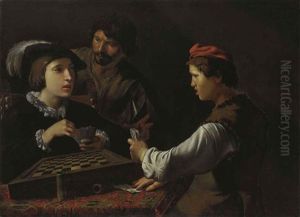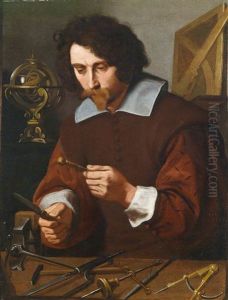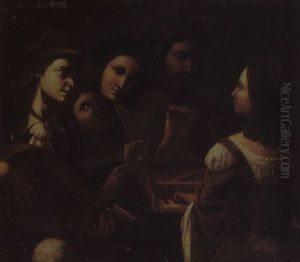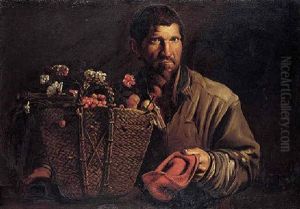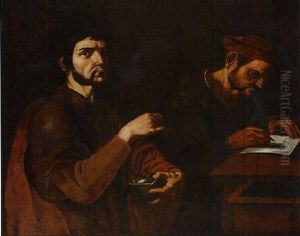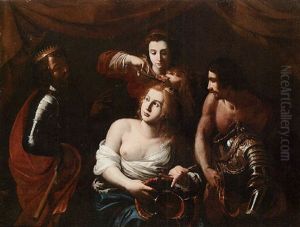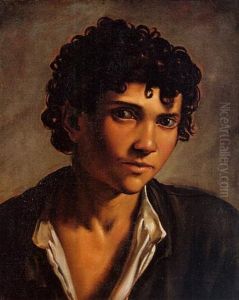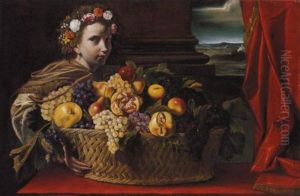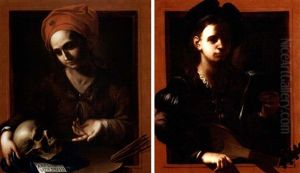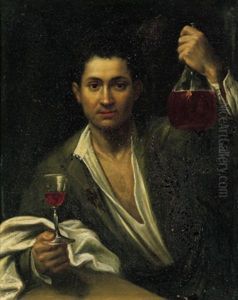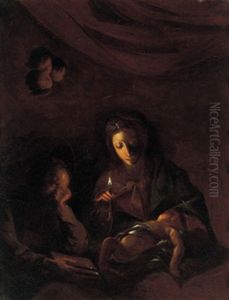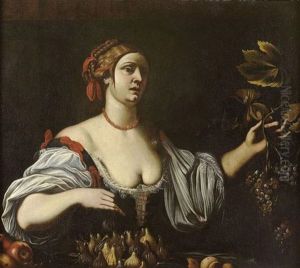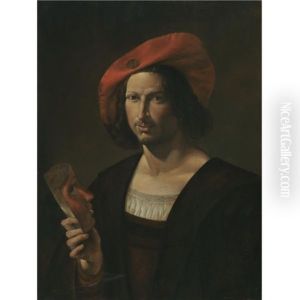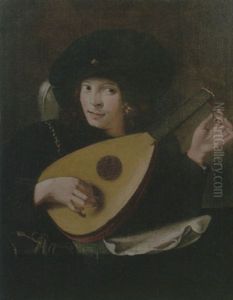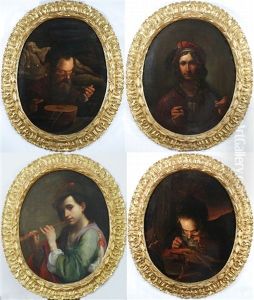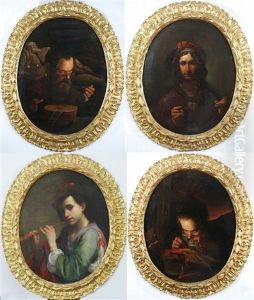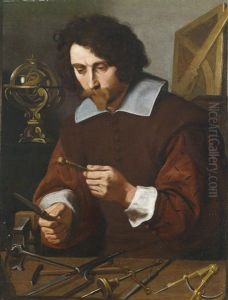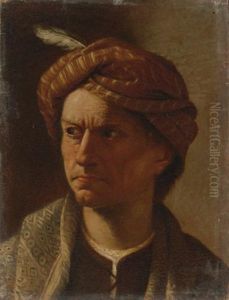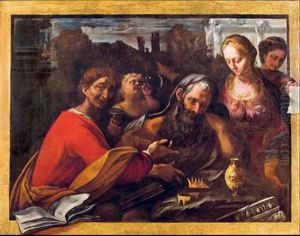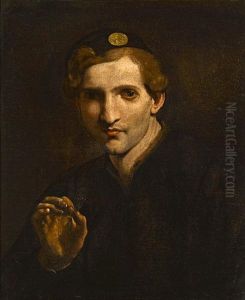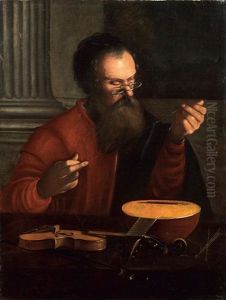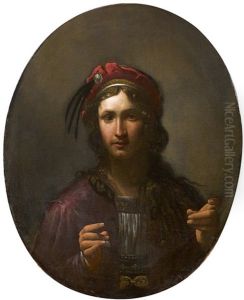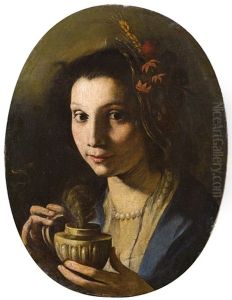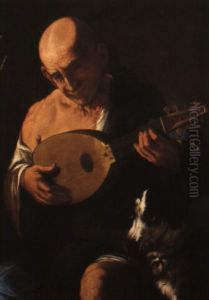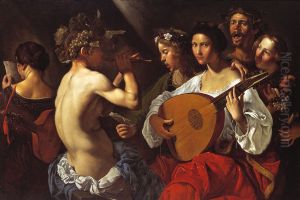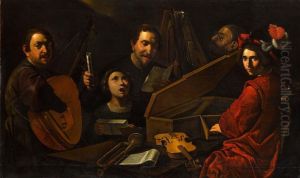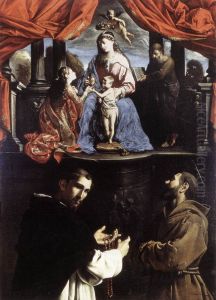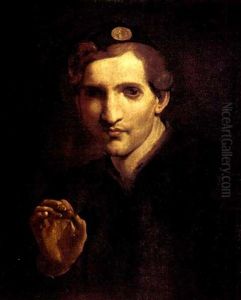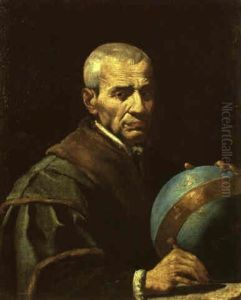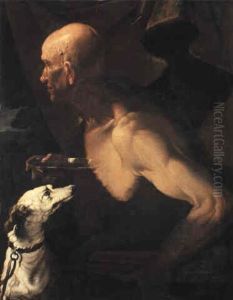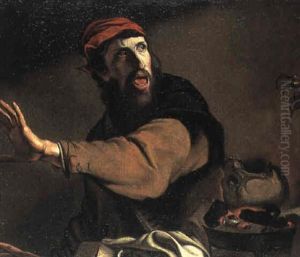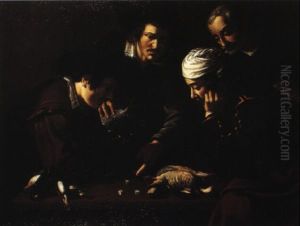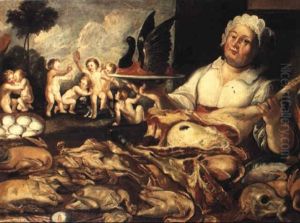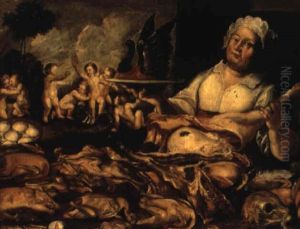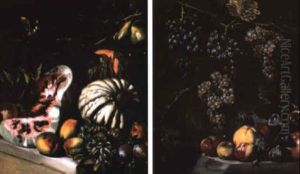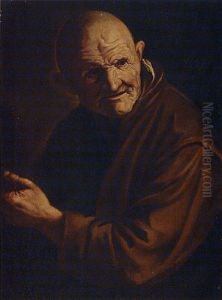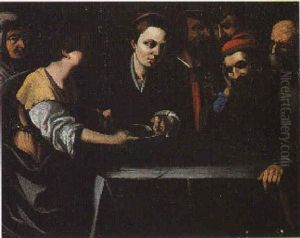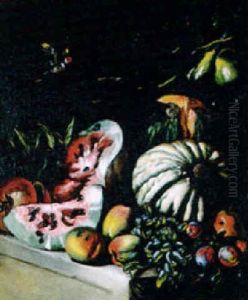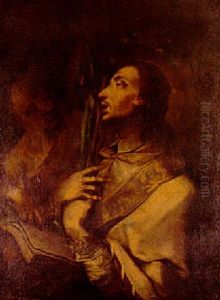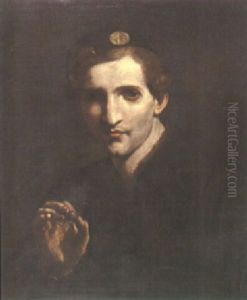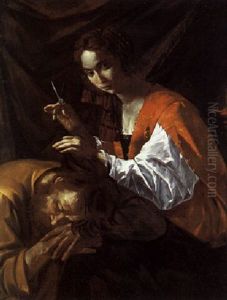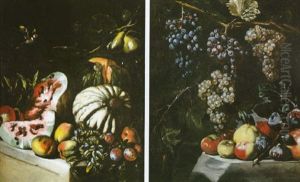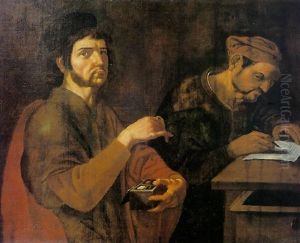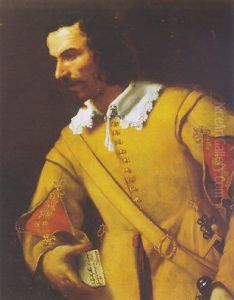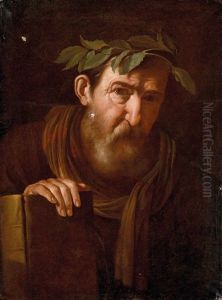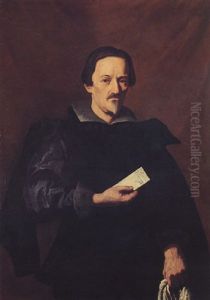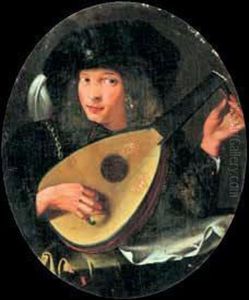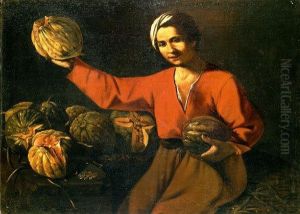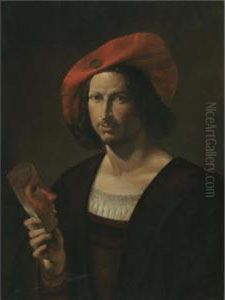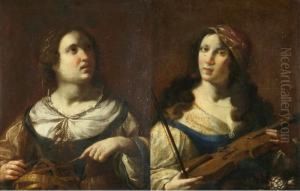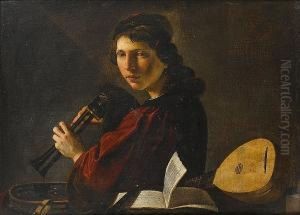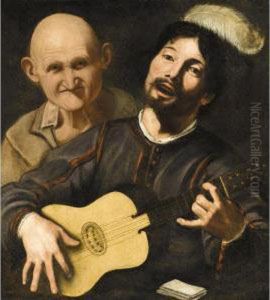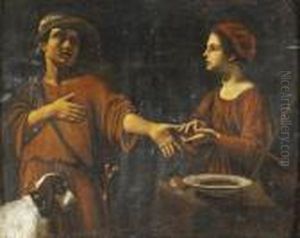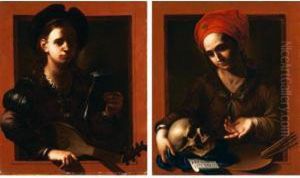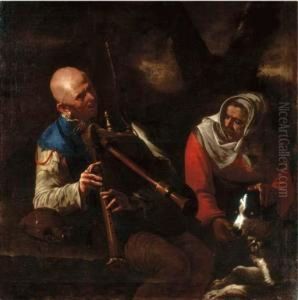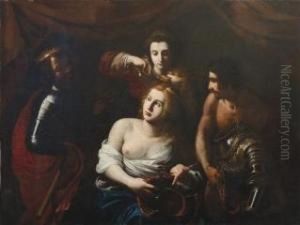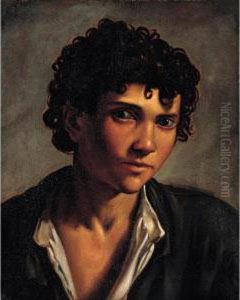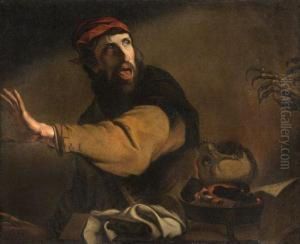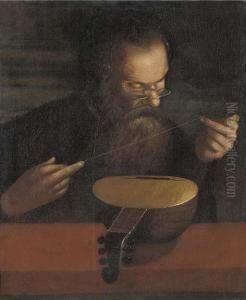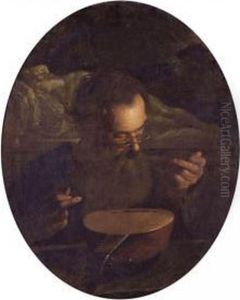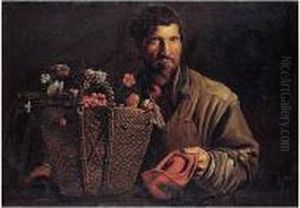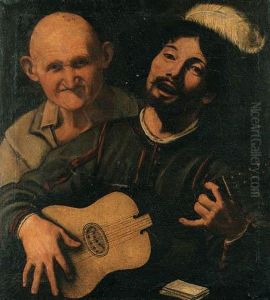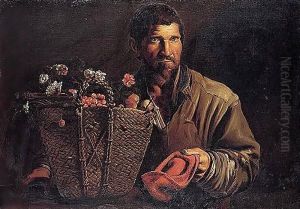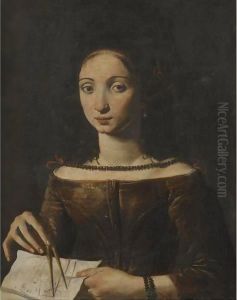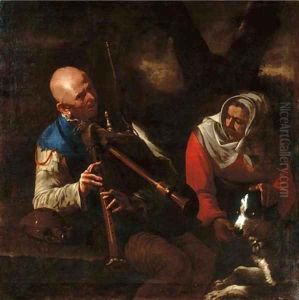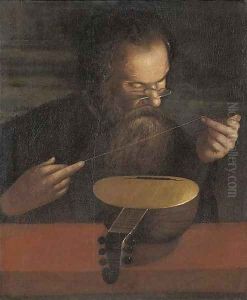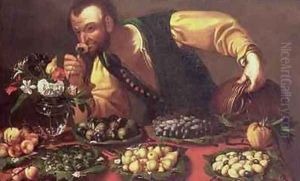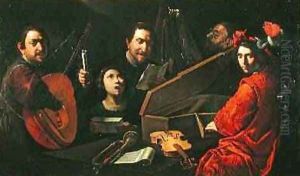Pietro Paolini Paintings
Pietro Paolini, also known as Pietro da Cortona, was an Italian Baroque painter and architect. He was born on November 1, 1603, in Cortona, Tuscany, Italy, and was baptized Pietro Berrettini. He is often considered one of the key figures in the emergence of Roman Baroque architecture. Paolini began his artistic training in Florence, but it was in Rome where he truly developed his distinctive style, which was characterized by dynamic compositions, dramatic use of light and shadow, and a rich color palette.
Paolini's most significant contribution to the art world was as a painter of frescoes in large-scale public and private buildings. His work was instrumental in transitioning from the Renaissance to the Baroque style. One of his most famous works is the ceiling fresco in the grand salon of the Palazzo Barberini in Rome, which features an allegorical depiction of 'The Divine Providence and Barberini Power'. This masterpiece is renowned for its illusionistic qualities and the way it seems to open up the architecture into the heavens.
In addition to his frescoes, Paolini was also a talented easel painter, creating numerous religious and mythological paintings. His work was highly sought after by the Roman aristocracy and the Catholic Church, and he received numerous commissions throughout his career. Paolini's influence extended beyond painting; he was an accomplished architect and his architectural designs contributed to the Baroque skyline of Rome. Among his architectural achievements is the church of Santa Maria della Pace, which features a distinctive curved facade that is considered a precursor to the Baroque style.
Paolini's legacy is significant in the history of Italian art. He founded an art academy in Rome, which became an important center for the training of future generations of artists. His students included important painters such as Luca Giordano and Giovanni Maria Morandi. Paolini's work influenced many artists in Italy and throughout Europe, and his style was emulated by those looking to capture the dynamism and grandeur of the Baroque.
Pietro Paolini died on May 1, 1681, in Rome. His death marked the end of an era, but his artistic legacy continued to inspire and influence the development of European art into the 18th century.
